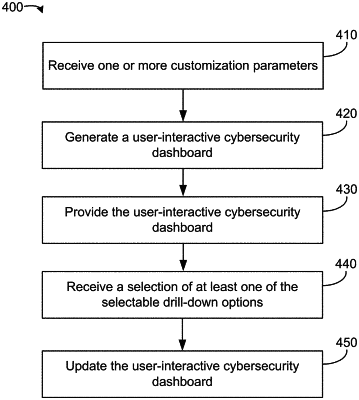| CPC G06F 21/577 (2013.01) [G06F 9/455 (2013.01); G06F 3/04842 (2013.01); G06F 2221/034 (2013.01)] | 20 Claims |

|
1. A method for managing cybersecurity risk for an entity, the method comprising:
receiving device connectivity data for the entity;
determining vulnerability data based on the device connectivity data;
generating a security risk profile of the entity, the security risk profile based on the determined vulnerability data;
retrieving an external contact, wherein the external contact is associated with the entity;
generating a vulnerability notification;
transmitting, to the external contact, the vulnerability notification;
providing a content portal to a user, wherein the user is authorized by the external contact, and wherein the content portal is configured to display the security risk profile via a dynamically generated graphical user interface (GUI);
receiving, via the dynamically generated GUI, a first input from the user, the first input comprising a selection of a component identified in the security risk profile and a response parameter;
providing, via the dynamically generated GUI, parameters for a targeted scan of the selected component;
receiving, via the dynamically generated GUI, a second input from the user, the second input comprising a selection of a confirmation of the parameters;
responsive to receiving the confirmation, transmitting a request to authenticate the user;
receiving, responsive to the request, a token;
validating the user based on the token;
responsive to validating the user, initiating the targeted scan of the selected component;
determining a result of the targeted scan;
updating the security risk profile; and
providing, via the dynamically generated GUI, the updated security risk profile to the user.
|